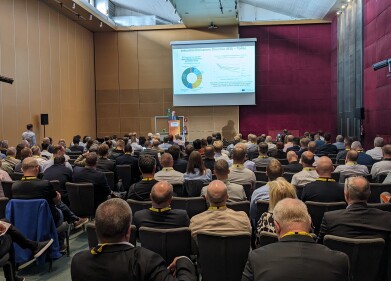Environmental laboratory
Toxic metals pollute environment around defunct Welsh mines
Mar 17 2024
In the verdant landscapes of Wales, hidden dangers lurk beneath the surface. The remnants of the region's industrial past, specifically its abandoned mines, are now sources of a silent environmental crisis. Recent investigations have uncovered that these neglected sites are releasing significant amounts of toxic metals into the environment, posing serious risks to both ecological and human health.
Every year, it's estimated that between 350 to 500 tonnes of harmful metals seep from these derelict mines into the Welsh ecosystem. This alarming figure stems from an analysis of 129 specific locations identified as major contributors to the degradation of water quality in the region. These findings underscore a problem that is both widespread and severe, given that Wales is home to over 1,300 abandoned mine sites.
The leaked metals, including lead, zinc, and cadmium, infiltrate the rivers and soil, creating a ripple effect that extends to the very heart of Welsh communities and their natural surroundings. The contamination spans an estimated 700 kilometres of river, highlighting the scale of pollution and its potential impact on local ecosystems.
The revelations about the extent of metal pollution in Wales have sparked urgent calls for governmental intervention. The magnitude of the issue has prompted politicians, such as Plaid Cymru MP Ben Lake, to demand immediate and coordinated action from both Welsh and UK authorities. The need for a swift response is underlined by disturbing findings, such as a recent study revealing dangerously high levels of lead in eggs from farms located downstream of these mines. The implications for public health, particularly the risk of cognitive impairment in children, cannot be overstated.
Addressing the legacy of abandoned mines is a complex challenge. For decades, these sites have been left to deteriorate, their toxic burdens leaching into the surrounding environment without check. Although efforts have been made to tackle the issue, such as the completion of a major remediation scheme on a former lead and zinc mine in Ceredigion, progress has been slow and limited in scope.
The cost of comprehensive remediation is daunting, estimated to run into hundreds of millions. Despite this, the urgency to act has never been clearer. The effects of metal pollution extend far beyond environmental degradation, impacting agricultural productivity, livestock health, and ultimately, the well-being of Welsh communities.
The path forward requires a multifaceted approach, leveraging both innovative technologies and collaborative governance. Projects are underway to address specific sites, with treatments aiming to neutralize or contain the pollution. However, the scale of the problem demands a more ambitious strategy, one that encompasses the entirety of Wales' abandoned mines.
The UK government's recent commitment to halve the length of rivers polluted by these mines by 2038 is a step in the right direction. Yet, the implementation of this goal will require significant investment, research, and cooperation among various stakeholders. It's a monumental task, but one that is essential for the health of Wales' environment and its people.
The pollution emanating from Wales' abandoned mines is a stark reminder of the enduring impact of our industrial past. As we move forward, it's crucial that we address these legacies with the urgency and seriousness they deserve, ensuring a healthier, cleaner future for all.
Digital Edition
AET 28.4 Oct/Nov 2024
November 2024
Gas Detection - Go from lagging to leading: why investment in gas detection makes sense Air Monitoring - Swirl and vortex meters will aid green hydrogen production - Beyond the Stack: Emi...
View all digital editions
Events
Jan 12 2025 Abu Dhabi, UAE
Jan 14 2025 Abu Dhabi, UAE
Jan 20 2025 San Diego, CA, USA
Carrefour des Gestions Locales de L'eau
Jan 22 2025 Rennes, France
Safety, Health & Wellbeing LIVE
Jan 22 2025 Manchester, UK



















